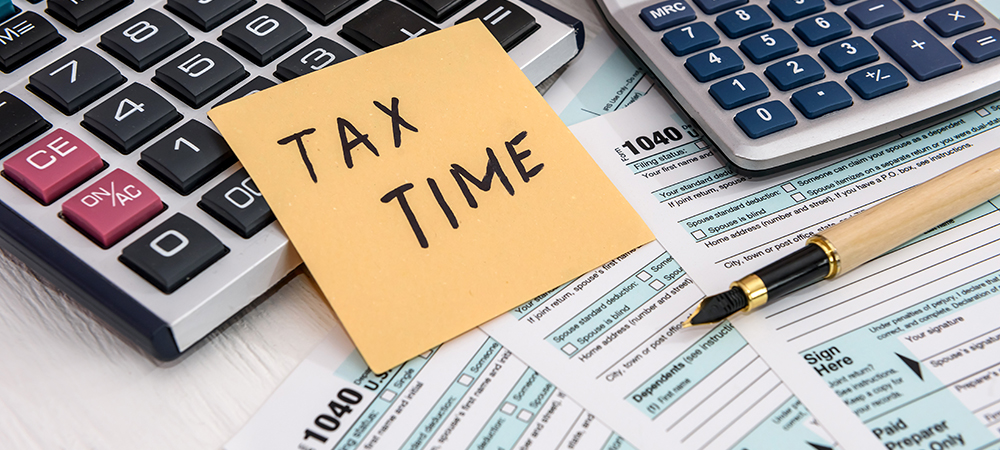As AI develops, it holds endless potential and offers boundless potential for growth across different sectors, particularly in tax. Russell Gammon, Chief Solutions Officer at Tax Systems, tells us more about how tax can become modernised from Artificial Intelligence and automation.
The UK government invests billions annually to both maintain its extensive legacy IT estate and to bring new services online. Whether it is in education, healthcare or defence, Digital Transformation is now critical to the effectiveness of our public sector and our ability to access it in a connected society.
This ongoing Digital Transformation is also intended to make the public sector more efficient and cost-effective while minimising waste. One of the more eye-catching of these new programmes is ‘Making Tax Digital’ (MTD), which is a ‘key part of the government’s plans to make it easier for individuals and businesses to get their tax right and keep on top of their affairs.’
Put simply, as of April 2022, all VAT-registered businesses regardless of size are now subject to mandatory online MTD submissions. This replaces the old system under which most organisations depended on manual spreadsheets and even paper records to calculate their returns.
This is a well-intentioned attempt to make it easier for businesses to get their VAT calculations right the first time while providing greater visibility for the authorities. This allows for the closer examination and comparison of businesses, more effective conduct of targeted investigations and thus, the maximised use of HMRC resources.
However, MTD is not simply an opportunity for the government to show off its technical expertise. It also provides businesses with a great opportunity to introduce new disruptive technologies, such as Robotic Process Automation (RPA) and Artificial Intelligence (AI), each of which can help enormously with MTD processes.
RPA software enables ‘bots’ to handle high-volume, repetitive and rules-based tasks more quickly and more accurately than humans. Across many industries, including financial services, healthcare and telecoms, RPA makes companies more efficient, reduces operational costs and enhances customer service. What was once a specialist niche in the technology industry is now seeing exponential growth, from around US$3 billion in global revenue this year to over US$13 billion in just eight years.
Moreover, RPA is commonly used in tax functions in many of the world’s leading accountancy firms and tax departments throughout the FTSE100. Most relevant to MTD, RPA has been developed to replace the myriad administrative copy and paste tasks across Excel spreadsheets as well as other tasks of simple to medium complexity.
As an example, big businesses that operate hundreds or even thousands of legal entities may well need to conduct the same types of tax calculation and reporting for each entity. Doing this manually is not only time-consuming, repetitive and boring for the employee, it is also prone to human error. Therefore, it is no surprise that RPA now provides a near out-of-the-box solution that can automate the necessary but repetitive chores, transforming something that used to take many hours into a task that can be completed in minutes with minimal oversight.
However, RPA does come with certain challenges, namely, that it can’t fix problems inherent in the calculations so finance teams can make the same mistakes they have always made but a lot faster. If there are existing mistakes in calculations, RPA will serve to amplify them at extreme speed.
How to engage effectively
It is fair to say though that the many positives far outweigh the negatives. For the employees – usually graduates and junior hires – who are tasked with performing these repetitive, mind-numbing processes, RPA can free them from frustration and allow them to focus on more value-added work, boosting job satisfaction.
At the same time, we can look at the vital area of compliance, where organisations invest significant resources and money but with perhaps only 10% earmarked to uncover insight and provide advice. In this case, a properly implemented RPA platform will enable companies to maximise their valuable human resources and unlock corporate insight.
All this innovation is arriving right when finance teams are subject to increasing pressure and limited funds. According to recent research from Deloitte, 93% of tax functions will be offered the same or a lower budget over the next three years. With the majority of tax teams currently focusing their time and resources on completing returns and ensuring compliance, that doesn’t leave much wriggle room for other areas.
This is where we might see AI come into play in a meaningful fashion. Although not as widely deployed as RPA in the world of finance – only a small proportion of FTSE100 have implemented AI solutions while the majority are already on the RPA path – AI has the potential to transform decision-making.
Take corporation tax as an example: each time an employee or business incurs an expense, the tax professional must decide whether it is allowable for corporation tax purposes. Most of these decisions are easy to make and have been processed countless times previously, making it ripe for AI, which can look to existing decisions to guide its judgement in similar situations. As with RPA, this is a great way to make businesses more efficient, while freeing staff from boring jobs. After all, where is the value in having a skilled employee sit and make the same decision on the same expenses countless times?
There is no doubt that there is some distance to go before we realise the full potential of AI across finance in general and tax specifically, however, it is clear the potential is indeed there and ready to be exploited.
As our modern, digital society continues to evolve, with more opportunities to invest for greater speed, clarity and value for money, while at the same time making the working lives of employees much improved, both RPA and AI offer a win-win situation. Particularly when it comes to tax, these developments are here not a moment too soon.




